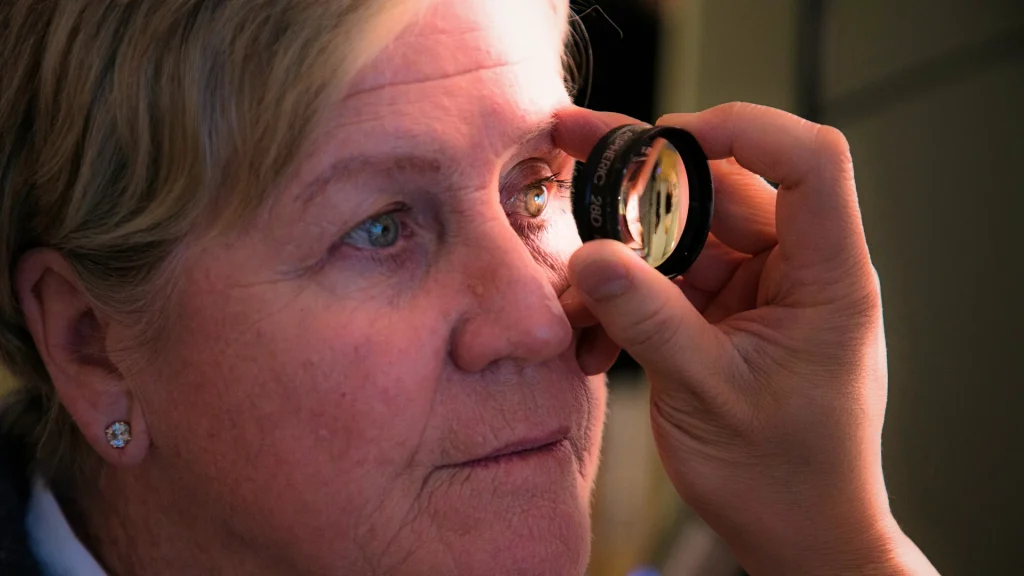November marks Diabetes Awareness Month, an important reminder of the growing global burden of diabetes and its complications. Among the most significant and preventable of these complications is diabetic eye disease. As frontline healthcare providers, optometrists and general practitioners (GPs) play a critical role in early detection, patient education, and coordinated management to prevent vision loss.

Understanding Diabetic Eye Disease
Diabetic eye disease encompasses a spectrum of ocular complications arising from chronic hyperglycaemia and microvascular damage, including:
- Diabetic Retinopathy (DR): The most common cause of vision loss in working-age adults, resulting from damage to retinal blood vessels. Staging includes both non-proliferative (NPDR) and proliferative retinopathy (PDR).
- Diabetic Macular Oedema (DMO): Fluid accumulation in the macula, often coexisting with retinopathy and directly impairing central vision.
- Tractional Retinal Detachment: The most common cause of a tractional retinal detachment is proliferative diabetic retinopathy. Fibrovascular or fibrotic proliferation can cause the neurosensory retina to detach from the underlying RPE.
- Cataracts: Occurring earlier and progressing more rapidly in people with diabetes.
- Glaucoma: Particularly neovascular glaucoma, linked to advanced diabetic retinopathy.
Epidemiology and Impact
According to the International Diabetes Federation, over 500 million adults worldwide are living with diabetes — a number projected to rise significantly by 2045. Up to one in three people with diabetes will develop some form of diabetic retinopathy, and one in ten will experience vision-threatening disease.
The tragedy is that up to 90% of vision loss from diabetic retinopathy is preventable with early detection and timely treatment.
Pathophysiology
Chronic hyperglycaemia leads to capillary basement membrane thickening, pericyte loss, and microaneurysm formation within retinal vessels. This cascade results in increased vascular permeability, ischemia, and eventually neovascularization in proliferative stages.
Systemic risk factors include:
- Duration of diabetes
- Poor glycaemic control (HbA1c > 7%)
- Hypertension and dyslipidaemia
- Pregnancy
- Renal impairment
The Role of Primary Care and Optometry
1. Early Screening and Referral
- Initial screening:
- Type 1 diabetes – within 5 years of diagnosis
- Type 2 diabetes – at diagnosis
- Follow-up:
- Annually, or more frequently if retinopathy is present.
- Methods:
- Dilated fundus examination with digital fundus photography (to document progression) remains the gold standard for screening.
- OCT imaging is increasingly used to detect macular oedema early.
When retinopathy or macular changes are detected, timely referral to an ophthalmologist or retinal specialist is essential for intervention before vision loss occurs.
2. Coordinated Management
A collaborative approach between Optometrists, GPs, endocrinologists, and eye care professionals ensures holistic management:
- Systemic control: Optimising blood glucose, blood pressure, and lipid levels.
- Ocular management: Monitoring for early retinopathy, oedema, or neovascularization.
- Patient education: Encouraging adherence to both medical and ophthalmic reviews.
Treatment Advances
Modern therapies have transformed the outlook for patients with diabetic eye disease:
- Anti-VEGF therapy: First-line for diabetic macular oedema and proliferative diabetic retinopathy.
- Intravitreal corticosteroids: Used when anti-VEGF response is suboptimal or contraindicated.
- Laser photocoagulation: Still vital in proliferative stages or widespread ischemia.
- Vitrectomy: Reserved for complications like vitreous haemorrhage or tractional retinal detachment.
Patient Education: The Cornerstone of Prevention
Optometrists and GPs are uniquely positioned to reinforce the message that good metabolic control protects vision. Key discussion points for patients include:
- Maintaining HbA1c near target (<7%)
- Controlling blood pressure and cholesterol
- Attending annual dilated eye exams
- Reporting any sudden vision changes promptly, and undergoing urgent assessment
Simple lifestyle interventions — healthy diet, regular physical activity, and smoking cessation — significantly reduce disease progression risk.
Conclusion
During Diabetes Awareness Month, let’s highlight the importance of interdisciplinary collaboration in preventing vision loss from diabetic eye disease. Optometrists and general practitioners are the first line of defence — through vigilant screening, timely referral, and comprehensive patient education, sight-threatening complications can be largely prevented.
Early detection saves vision — and collaboration saves lives.